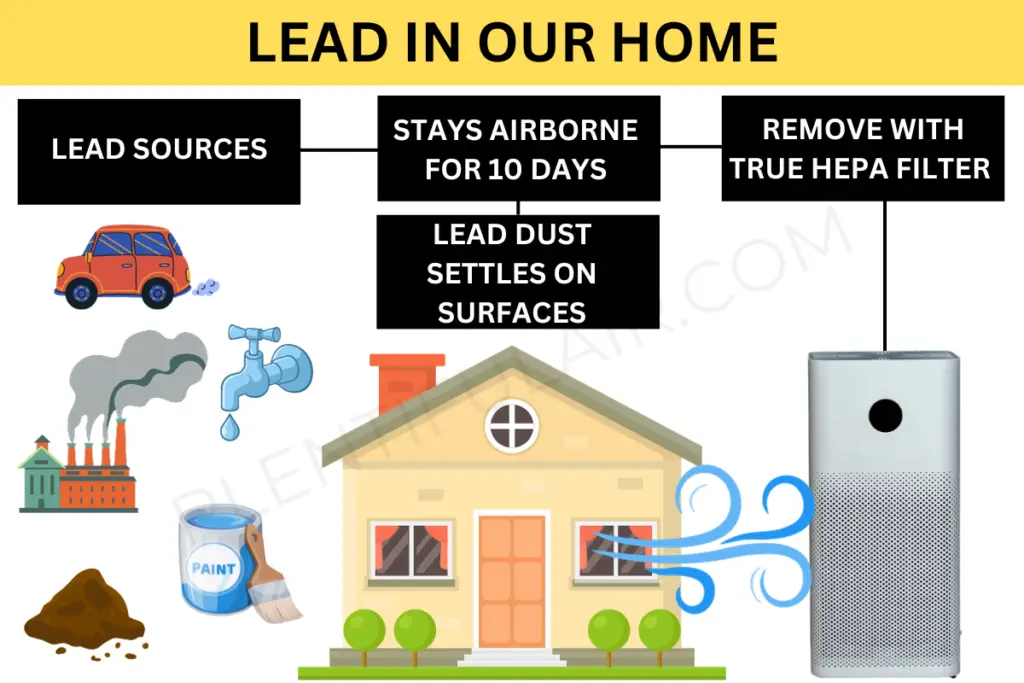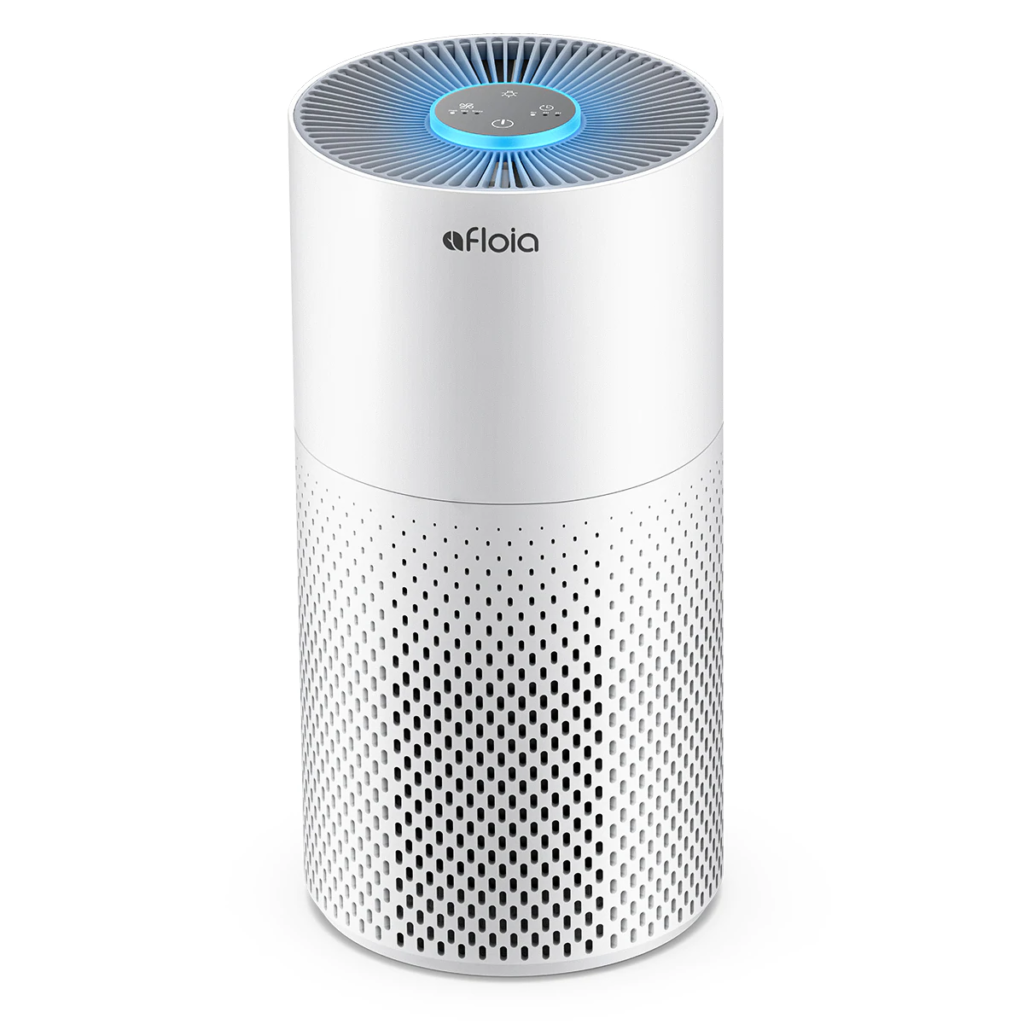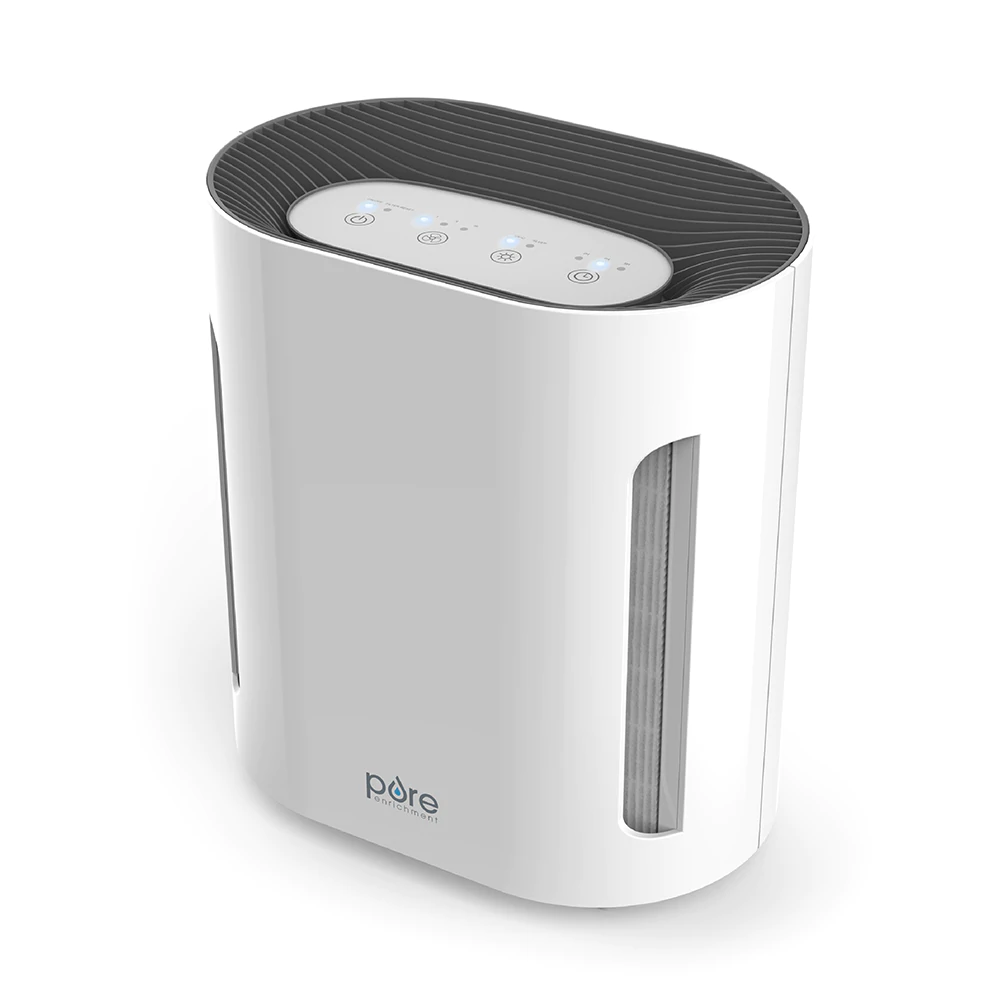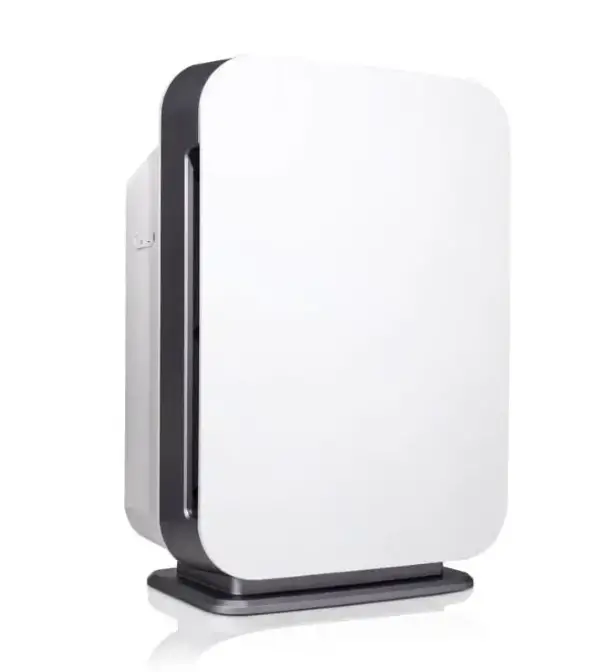Lead is a toxic pollutant that can seriously affect our health. While it’s best to remove the root cause of lead contamination, an air purifier can be effective at removing airborne lead dust from our home.
Air purifiers with a True HEPA filter can remove lead particles from the air. The fine interwoven fibers of the filter traps both large and small lead particles. Lead dust can remain in the air for more than 10 days before settling on surfaces throughout the home, if they aren’t removed by an air purifier.
This article will explain everything you need to know about lead and how to remove it.
Lead In Our Air
Lead particles that are larger than 10 microns can remain airborne for up to 10 hours. These are still too small for us to see, but are around the same size as pollen or a single grain of Talc powder.
While lead dust that is smaller than 1 micron can stay in the air for more than 10 days. These lead particles are as small as bacteria, and can travel 400 sq. ft before they settle down.
We are exposed to lead every time we breathe in contaminated air.
How to Remove Lead from Air
The most efficient way to remove lead particles from air is using an air purifier fitted with certified HEPA filters.

True HEPA filters are the best for getting rid of lead from the air as they can remove 99.97% of particles as small as 0.3 microns (airborne lead particles are mostly 1-3 microns, with lead dust reaching sizes smaller than 0.6 microns).
Medical-grade H14 True HEPA filters are a step-up, and can remove 99.9% particles down to 0.1 microns in size.
The HEPA-like and HEPA type filters can also remove lead particles from the air, but usually, they are only effective against 2 microns or larger particles. So they don’t remove the tiny lead dust particles.
HEPA air filters used for removing lead from air must comply with US Standard (ISET-RP-CC001) for true HEPA filters, which require an extremely high efficiency.
HEPA Filters That Can Remove Lead Particles
HEPA filters have multiple layers of inter-woven sticky fiberglass.
An air purifier draws in the polluted air, and a fan forces it through the HEPA filter, which traps the lead in its fibers and returns clean air back into the room.
HEPA is a standard for filters defined by the United States Department of Energy (DOE). This standard defines whether a filter is capable of capturing the target contaminants or not.
True HEPA
A True HEPA filter should meet the DOE standard set for HEPA filters as close as possible which means that it should be able to remove 99.97% of all particles smaller than 0.3 microns at its maximum efficiency.
HEPA Type
Calling a filter a ‘HEPA type’ can be misleading as they don’t conform to US HEPA standards. It can either have the same effectiveness as a HEPA filter or it can be useless.
HEPA Like
The term HEPA-like is just a marketing tactic. Basically, it’s a modified HEPA-Type filter that doesn’t fulfill any HEPA standards.
European HEPA standards
HEPA standards are defined differently in Europe. If you see a filter labeled H11, H12, H13, H14, U15, U16, or U17, the European standard is used. Generally, the higher the number regardless of the letter, the more efficient it is.
The U.S. True HEPA classification fits in between the European standards H13 (with an efficiency of 99.95%) and H14 (99.995%).
Air Purifiers with HEPA filters for Lead Removal
Any air purifier with a True HEPA filter, H13 or H14 HEPA filter can remove lead particles. There are also HEPA filters that can be fitted to HVAC units – you can read more about adding an air purifier to an HVAC here.
Here are our favorite air purifiers, each one has a true HEPA filter for removing lead effectively.
1. Kilo Air Purifier

Afloia’s Kilo Air Purifier features a 3-in-1 HEPA filtration system with a pre-filter, H13 True HEPA filter, and an activated carbon filter that can remove both large and small lead particles.
2. PureZone Air Purifier

Pure Enrichment’s PureZone air purifier comes with a three-stage filtration system that can remove lead.
Stage 1 is a pre-filter and activated carbon filter, stage 2 is the True HEPA filter, and stage 3 uses UVC light.
This purifier can remove 99.97% of particles that result in lead exposure.
3. Alen BreatheSmart 75i Air Purifier

The Alen’s Energy Star certified BreatheSmart 75i air purifier is a high-tech air purifier that uses a True HEPA (H13) filter to remove lead and other harmful particles larger than 0.1 microns.
Lead In Our Home
Lead is everywhere on earth. It’s used in batteries, solders, pigments, gasoline, paint, ceramics, plumbing pipes, and paint.
How Lead Enters Our Home
Lead-contaminated water and soil from industry or mining, and some lead-containing products, such as paint, are the most common sources of lead in our homes.
1. Paint
In the United States, we are often exposed to lead through paint particles.
Although lead-based paints have been banned since 1971, you can still find lead paint in older buildings. The paint chips over time and reduces to a fine dust, which becomes airborne and contaminates our home or offices, and the surrounding area with lead.
This dust can remain in the air for almost two weeks, during which time we are constantly exposed to the contaminated air.
Lead-based paints continue to affect the health of adults and children across the U.S., including recently publicized cases in Syracuse and Toledo.
In fact, studies show that lead-based paints continue to be the main source of lead dust in homes today.
2. Water
Lead leaches directly into water through lead-containing pipes and plumbing lines. In areas with water of low mineral content or high acidity this problem is even worse because of increased corrosion in the pipes.
It’s more likely for the water in our home to be contaminated with lead, than it is for rivers and lakes to be contaminated.
The only way to know if the water in our home contains lead is to have it tested. When testing your water supply, it’s important to test different faucets, including at least one indoor and outdoor tap, as lead concentrations can be different throughout the home depending on the level of corrosion in your pipes. If you have a multi-level home, then it’s also a good idea to test one downstairs and one upstairs tap.
You can easily do this with a lead-specific water test. MyTapScore.com offers quite affordable tests that also check for copper, which is a common heavy metal contaminant in our tap water.
If you are concerned about lead in your water and want to know more about how to remove it, there is some great information on the topic available here.
3. Soil
Lead in soil comes from not only the flaking of exterior lead-based paint from old buildings, but also mining (especially open-pit), and industrial sources. Exhaust from cars using leaded gasoline in the past dramatically increaseed the amount of lead in our soil, particularly next to the high traffic roads. This lead can re-enter our air whenever the dirt is disturbed, even simple gardening is enough.
Whenever contaminated soil is disturbed, these lead particles become airborne, and are easily inhaled. Small children are also able to ingest the soil when playing outside – a problem that children of Oakland Middle School are all too familiar with.
4. Household Products
Lead can also enter our homes through lead-based or lead-painted products, including furniture, jewelry, toys, cosmetics, and food containers.
How To Get Rid Of Lead Dust In Your Home
Airborne and settled lead dust particles can be removed from your home by using true HEPA air purifiers and wet washing surfaces.
To wet washing window sills, door frames, walls, and floor of your home:
- Wear protective gloves.
- Prepare a cleaning solution by mixing household detergent and water.
- Clean the window sills, walls, door frames, and floors of loose paint chips or other debris.
- Use the cleaning solution to thoroughly wash the window wells and sills, door frames, walls, and flooring.
- Rinse the area where you’ve applied the cleaning solution with clean water. Use separate paper towels for washing and rinsing.
- Put the paint chips and paper towel in a thick garbage bag and seal it. Keep this bag out of reach of kids and pets. Call local county offices to know how you can dispose of the lead debris.
Complete remediation of surfaces containing lead paint is recommended – however, this usually requires a professional.
How To Test For Lead
You can test for lead in your home by:
- Using lead test kits: such as a SCITUS lead test swab kit. Although they can’t quantify the amount of lead, they’ll tell you if lead is present so that you can take preventive measures.
- Environmental lab tests: The types of tests are performed by professionals to detect the presence of lead.
- Licensed lead risk assessors: Licensed lead risk assessment companies can test for lead in dust, soil or paint. They can also tell you how to address the lead hazard appropriately. You can find a certified professional in your area who can inspect and test your home for the presence of lead.
How Lead Affects Our Health
Lead is absorbed into the body and distributed throughout the bloodstream before accumulating in our bones. According to EPA, lead exposure can negatively impact our:
- Respiratory system
- Cardiovascular system
- Reproductive system
- Nervous system
- Kidney function
- Blood’s oxygen-carrying capacity
It’s also toxic to our organs, tissues and nervous system.

